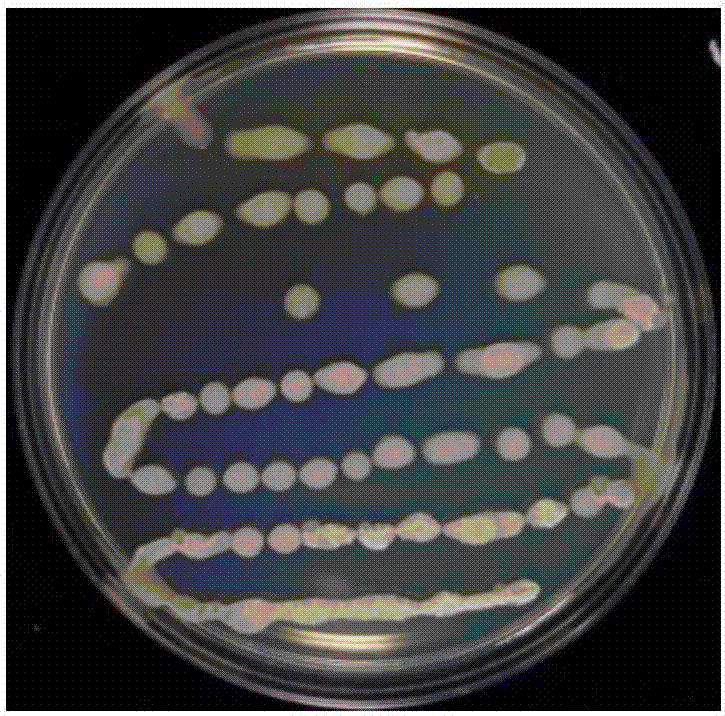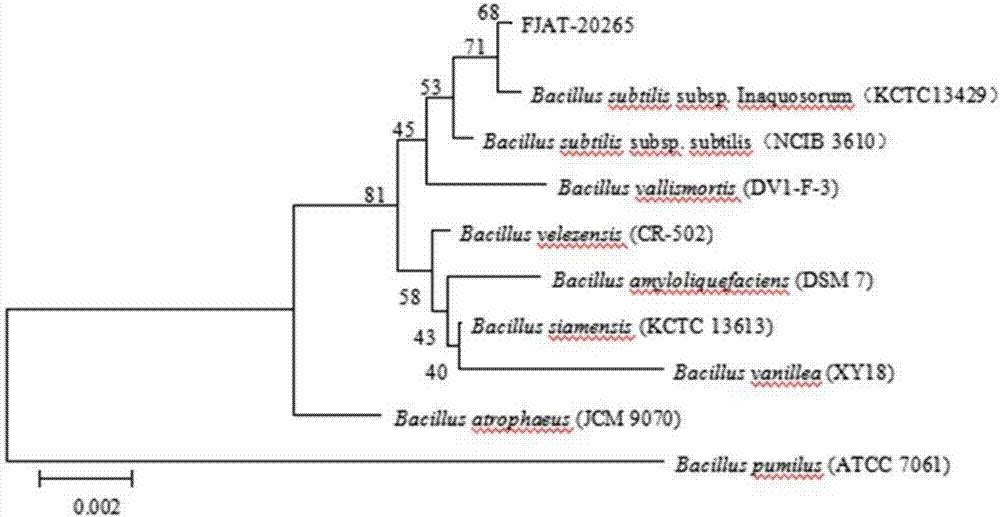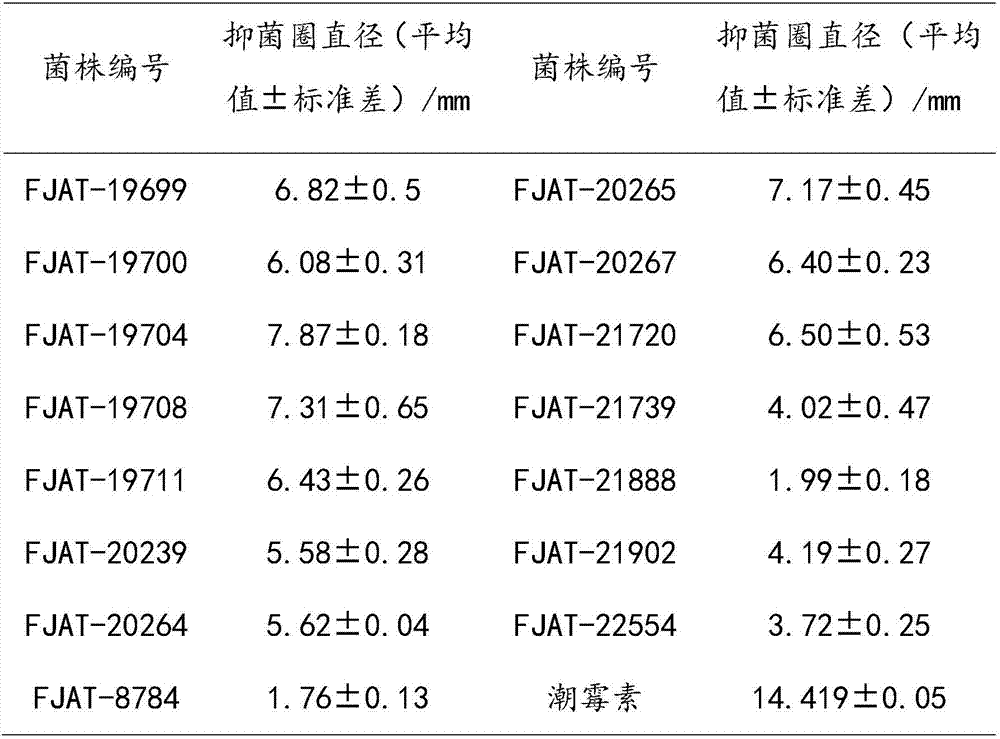Bacillus strain with antagonistic action on root rot
A technology of Bacillus and Bacillus subtilis, applied in the field of microorganisms, can solve the problem of poor control effect on plant root rot
- Summary
- Abstract
- Description
- Claims
- Application Information
AI Technical Summary
Problems solved by technology
Method used
Image
Examples
Embodiment 1
[0016] Example 1 Screening of antagonistic strains
[0017] 1. Soil sample collection and Bacillus isolation and purification
[0018] The grass root soil samples collected from Hoh Xil were air-dried and ground to make a soil suspension, which was then properly diluted with sterile water and coated on an NA plate; cultivated at 30°C for 72 hours, picked a single colony, and preserved it in glycerol as the strain to be tested . 63 strains were isolated and purified by dilution plating method as the strains to be tested.
[0019] 2. Screening of biocontrol strains of Fusarium oxysporum
[0020] (1) Preliminary screening by confrontation method
[0021] The test strain tomato host Fusarium oxysporum FJAT-30512 (preserved in the Institute of Agricultural Biological Resources, Fujian Academy of Agricultural Sciences), in beef extract peptone medium (NA: beef extract 3g, peptone 5g, glucose 10g, agar powder 1.7%, pH 7.2-7.4) on the plate, and incubated at 30°C for 48h. Fusariu...
Embodiment 2
[0041] Identification of embodiment 2 antagonistic strains
[0042] 1. Morphological characteristics
[0043] Bacillus FJAT-20265 was activated on the NA plate, and the colony shape, size, color, transparency, protrusion and edge of the strain were observed after 48 hours.
[0044] The colony characteristics of strain FJAT-20265 are as follows figure 1 As shown, the colonies are small, round, milky white, smooth and moist, raised, with neat edges, and opaque.
[0045] 2.16S rRNA gene sequence analysis
[0046] The genomic DNA of the strain FJAT-20265 was extracted according to the operation steps of the bacterial genome extraction kit (generay biotech#GK 1071, Shanghai Jierui Bioengineering Co., Ltd.), and the 16S rRNA gene general primers 27F and 1492R were used for PCR amplification. The PCR reaction procedure was referred to Literature by Zheng Xuefang et al. (Zheng Xuefang, Liu Bo, Zhu Yujing, et al. Screening and Identification of Bacillus Bacillus for the Biocontrol o...
PUM
| Property | Measurement | Unit |
|---|---|---|
| diameter | aaaaa | aaaaa |
| diameter | aaaaa | aaaaa |
Abstract
Description
Claims
Application Information
 Login to View More
Login to View More - R&D Engineer
- R&D Manager
- IP Professional
- Industry Leading Data Capabilities
- Powerful AI technology
- Patent DNA Extraction
Browse by: Latest US Patents, China's latest patents, Technical Efficacy Thesaurus, Application Domain, Technology Topic, Popular Technical Reports.
© 2024 PatSnap. All rights reserved.Legal|Privacy policy|Modern Slavery Act Transparency Statement|Sitemap|About US| Contact US: help@patsnap.com










